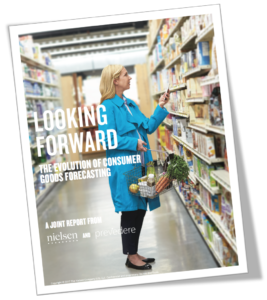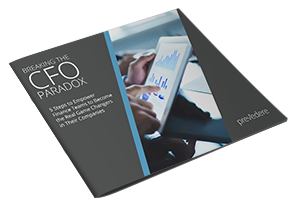Last Updated: January 12, 2021
Forecasts are helpful in business planning, but that’s not the whole story. What really impacts profits is the balance between costs, sales, and demand. At the end of the day, a business cannot thrive without employing a well-rounded planning strategy. Predictive analytics improve accurate forecasting and your bottom line.
Consider this scenario. Companies in the manufacturing industry with $5 billion in annual revenue average an 18.26% return on equity and have an average annual net income of $281,708,333. Studies by MIT Sloan Research have demonstrated that by leveraging external factors and identifying leading indicators to create more accurate forecasts, companies can, on average, increase return on equity by 5.14% – that equates to an increase in net income of $79,305,203.
These leading indicators help companies more accurately predict supply costs and demand for products and services, ultimately empowering them to make smarter decisions. Understanding that predictive analytics improve accurate forecasting is simply no longer an option.
Ways Predictive Analytics Improve Accurate Forecasting And Your Bottom Line

1. Avoid shortages or excess inventory. With a more accurate view of future demand, companies can stock accordingly, increasing production ahead of demand spikes and reducing inventory in advance of waning demand. Clearly, this has the immediate benefit of having the right product at the right time but also results in cost savings in terms of more efficient supply chain management. Products don’t have to sit in storage or supply shipments don’t need to be rushed, as companies have a clearer picture of their needs.
2. Improve market strategies. Leveraging external factors and leading indicators allows companies to make smarter decisions on entering growth markets and exiting declining markets. With added knowledge on how markets are changing, and exactly how those changes will affect your individual business, you can make more strategic growth decisions.
3. Anticipate “what-if” scenarios. What if consumer confidence falls drastically in 2016? What if the cost of oil increases 30%? What if we have unprecedented amounts of rain in a key market? By understanding the answers to these questions, enterprises can react more quickly – ahead of their competitors.
For a real-world application of the benefits of accurate forecasting, let’s look at one of the nation’s leading fast food companies. In order to ensure product and service availability (and reduce the risk of customers flocking to a competitor if something is unavailable or there are long wait times), the company overstocked and overstaffed. However, after analyzing external data, the restaurant realized that the price of gas in the local market, weather, and online social consumer sentiment had a strong correlation to future demand. Knowing this, the company reduced its forecast error by 20% and was able to save millions of dollars in food, paper and staffing costs – directly improving profits.
Curious how predictive analytics improve accurate forecasting affects your bottom line? Check out our calculator tool after selecting your industry here.
***
 Download complimentary ‘CFO Playbook Report,’ to explore demand forecasting accuracy tools >>
Download complimentary ‘CFO Playbook Report,’ to explore demand forecasting accuracy tools >>